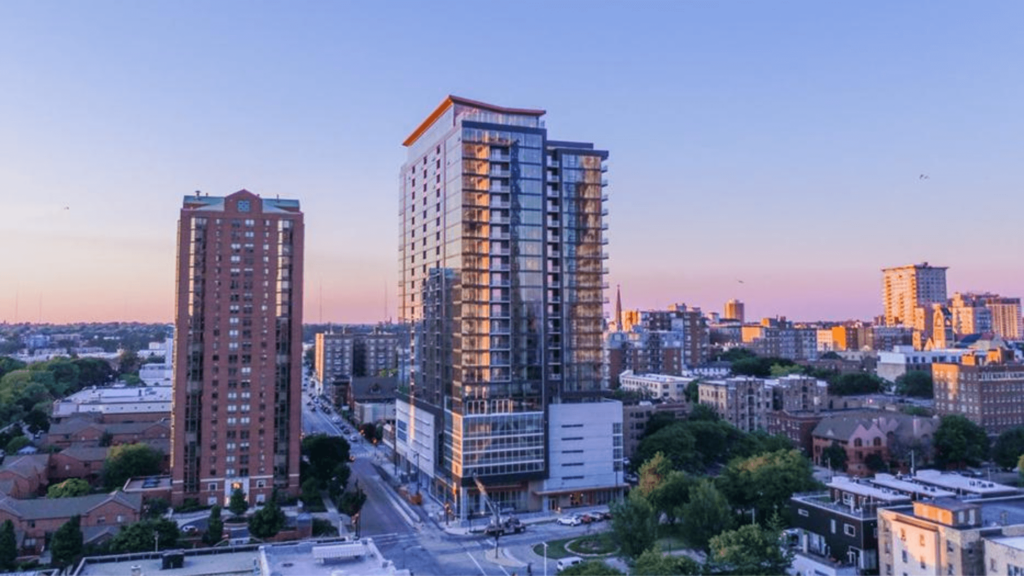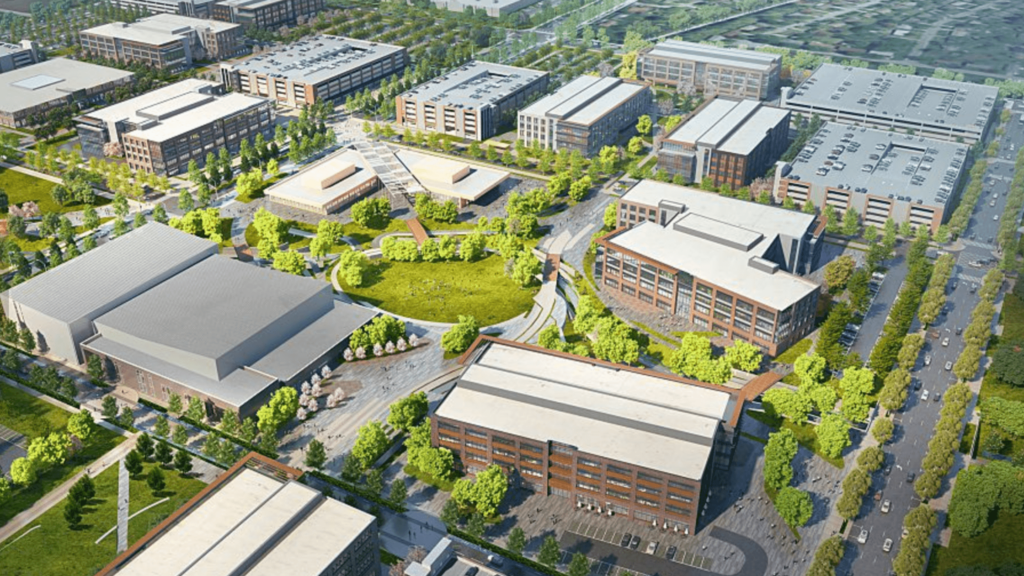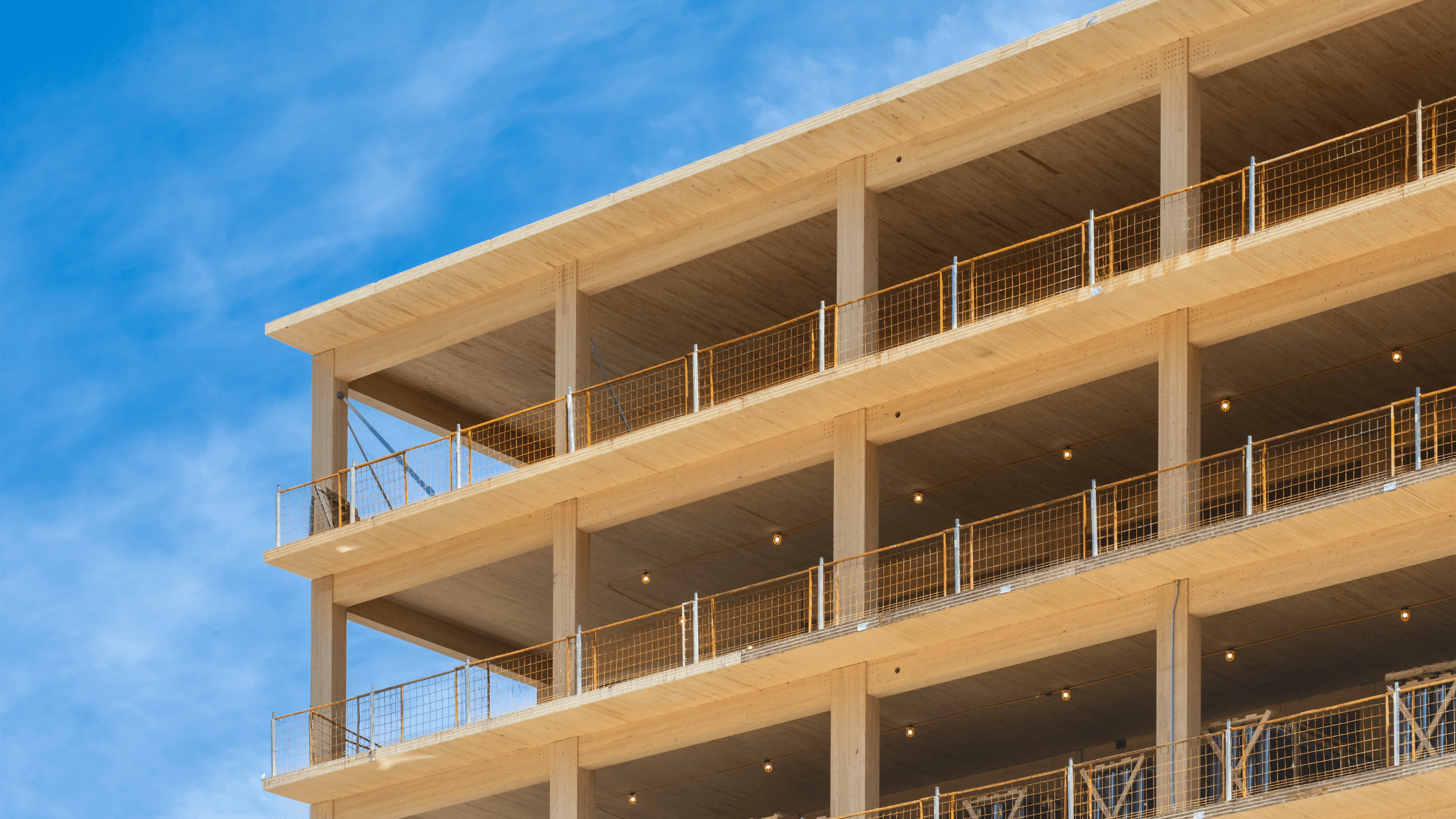In the quest for sustainable construction, mass timber is emerging as a revolutionary alternative to traditional materials like concrete and steel. Recent large-scale projects, such as Walmart’s corporate campus in Arkansas and the record-breaking Ascent tower in Milwaukee, showcase the material’s potential. Its ability to reduce buildings’ carbon footprint while also providing strength and durability capable of matching traditional materials makes it an exciting development in the construction industry.
What is mass timber?
Mass timber refers to a category of engineered wood products created by layering multiple pieces of wood, often laminated together using adhesives, nails, or wooden dowels. The most common form, cross-laminated timber (CLT), features wood layers set at right angles to one another. What truly sets mass timber apart is its ability to serve as a viable substitute for steel and concrete, offering comparable load-bearing capabilities and structural resilience. The CLT structure grants mass timber strength and stability, making it suitable for large-scale construction up to 18 stories high. However, mass timber is being used in more than just large-scale projects.
Types of mass timber being used in construction
Mass timber products are versatile and adaptable across various applications in construction due to their structural strength and design flexibility. Here’s a breakdown of the commonly applied mass timber products:
- Nail-Laminated Timber (NLT): Commonly used for floors and decking in commercial and industrial buildings. NLT’s simplicity and cost-effectiveness make it suitable for shorter spans.
- Glue-Laminated Timber (Glulam): Glulam is frequently used for large beams, columns, and arches. Its ability to be curved and shaped means it is often found in architecturally complex buildings like sports arenas and churches.
- Dowel-Laminated Timber (DLT): Known for its strong connections without adhesives, DLT is commonly used in industrial and commercial floors, allowing for efficient construction with low environmental impact.
- Cross-Laminated Timber (CLT): Primarily used in high-rise buildings, walls, floors, and roofs, CLT’s ability to bear heavy loads makes it ideal for tall structures. It’s also preferred for its quick assembly and precise prefabrication.
Mass timber’s rise to spotlight
A major breakthrough for mass timber came in 2021 when updates to the International Building Code (IBC) allowed for the construction of mass timber buildings up to 18 stories tall. This milestone was significant because it removed a regulatory barrier that previously limited the height and scope of timber structures. The new codes acknowledged the advancements in mass timber technology, particularly its structural integrity, fire resistance, and ability to meet stringent building requirements.
For example, in terms of durability, mass timber has proven resilient against natural disasters like earthquakes due to its high strength-to-weight ratio. Its lower weight reduces the load on foundations, and its flexible structure can better absorb seismic activity than heavier materials like concrete. Additionally, mass timber has demonstrated fire resistance. During fire tests, mass timber develops a char layer on the outer surface that insulates the inner core, maintaining its structural integrity. This performance under fire conditions, combined with proper encapsulation techniques such as gypsum or drywall layers, makes it as safe as traditional materials under modern building codes.
While these proven advancements have allowed mass timber to be used more commonly in a wider variety of projects, from mid-rise apartment buildings and office spaces to large-scale developments like Walmart’s campus, there is more to mass timber than just meeting code regulations.

Benefits of using mass timber
Lower carbon footprint
One of the primary advantages of mass timber is its contribution to reducing carbon emissions. Unlike steel and concrete, which require energy-intensive production processes, wood naturally stores carbon. By using sustainably harvested timber, construction projects can significantly lower their carbon footprint, making mass timber an eco-friendly choice in the fight against climate change. This benefit is crucial as cities and industries work toward more sustainable building practices.
Aesthetic and biophilic benefits
Mass timber buildings offer a unique aesthetic appeal, with the natural warmth and texture of exposed wood creating inviting spaces. This biophilic design—connecting occupants with nature—has improved mental well-being, increased productivity, and even reduced stress in office environments. Whether used in residential homes or commercial buildings, mass timber creates spaces that feel both modern and natural, enhancing the overall consumer experience.
Faster construction times
The prefabrication of mass timber components allows for faster assembly on-site, reducing labor costs and minimizing construction time. This speed makes mass timber especially beneficial for large-scale commercial projects or developments that require quick turnaround times. In many cases, entire structures can be assembled in a fraction of the time it would take to construct a similar building using concrete or steel.
Versatility in application
Mass timber is highly versatile and can be used across various construction types, including residential, commercial, and institutional projects. It has proven effective in everything from low-rise homes to high-rise buildings.

Are we ready for mass adoption?
While the hype is building behind mass timber, several hurdles must be addressed.
- Workforce training: Many workers in the construction industry lack experience with mass timber building techniques. Developing specialized education programs and apprenticeships will be crucial in scaling its use.
- Sustainable harvesting practices: While timber is a greener product than concrete and steel, guidelines that are strictly enforced are needed to ensure that mass timber’s environmental benefits are realized without contributing to deforestation.
- Building a sustainable supply chain: This is another critical step, especially since prefabricated components are typically manufactured off-site. To minimize delays, it will be necessary to ensure consistent and quality production and secure transportation methods.
- Managing the long-term lifecycle of mass timber buildings: How the material will fare in different climates is still to be fully determined. In addition, implementing strategies for maintaining and repairing these structures after fires is still an issue that needs to be solved and will be essential for securing investor and public confidence.
Mass timber’s full potential may remain untapped without addressing these logistical, regulatory, and ecological considerations.
Bottom line
Mass timber rapidly emerges as a key material in sustainable construction, offering lower carbon emissions and faster build times. Its versatility allows for use in everything from residential homes to high-rise buildings. As regulatory frameworks evolve and technical challenges like workforce training and sustainable harvesting are addressed, mass timber is poised to play a crucial role in the future of eco-friendly construction practices.




3 comments